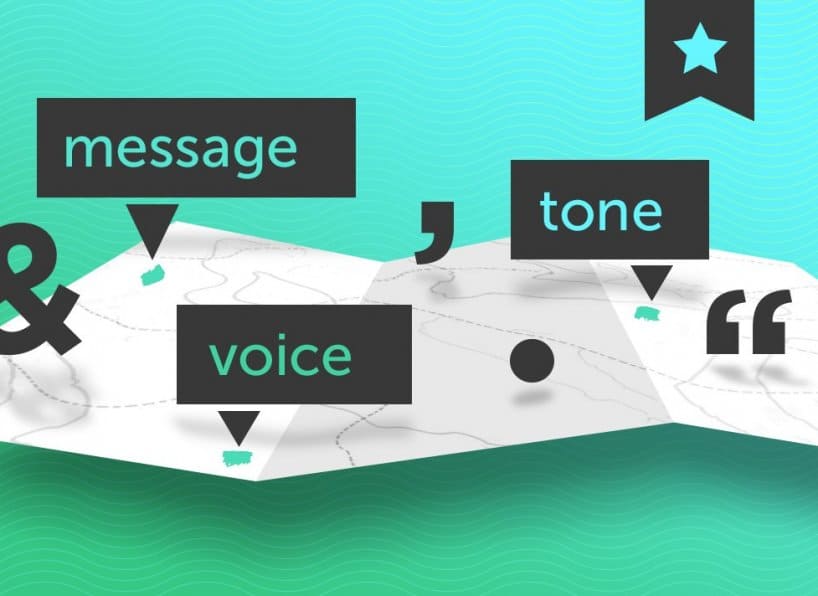“Variety may be the spice of life, but consistency pays the bills.”
Even though author Doug Cooper wasn’t referring to content style guides in that quote from his book Outside In, he perfectly captured its importance. Brand consistency is a driving force behind building brand trust, especially when it comes to content marketing. And one of the best ways to maintain consistency and honor your audience is to follow a clear-cut, detailed style guide that’s representative of your brand’s preferences, messaging and voice. Bottom-line: your brand has a unique style, so why aren’t you honoring it?
First, What is a Content Style Guide?
A content style guide is an organized set of rules for copywriting specifically for your company. These are most commonly used for website content like blog articles, social media posts, webpages, email content, eBooks and anything else you’re putting on the internet. Traditional marketing items should also follow a style guide. On top of keeping track of things like grammar, formatting and words to avoid, it acts as an instructional manual for what your brand says and how you say it.
Why Do You Need a Content Style Guide?
People are smart. If a brand is inconsistent, the audience will notice. Imagine if your company was appreciated for its informal, personable voice on Facebook but sent out completely different emails that were stuffy and formal. Your email recipients would unlikely recognize your brand if they saw it on social media, and vice versa.
If there are multiple people at your company doing the writing, a style guide will help keep everyone on track. Plus, you can have the higher-ups approve anything that’s added to the style guide, so you’ll know you’re using approved language, grammar and messaging every time you write.
Brand consistency helps build trust, and a content style guide is your ticket to a consistent writing style.
What Should Be in a Content Style Guide?
What’s in your style guide might vary based on your industry and the type of messaging you’re going for, but you’ll want to at least include the following key sections in any type of template you create.
Details About Your Company
Company Description
In Vital’s style guides for our clients, we have a section that talks about what our client does, simply explained like we were introducing them to a new employee.
We also include their brand positioning statement, which is the unique impression they make in their customers’ minds and the value they provide. This is more in-depth than a tagline, but you can also include that in this section.
Here’s Volvo’s brand positioning statement as an example:
“For upscale American families, Volvo is the family automobile that offers maximum safety.”
Boom. In one sentence, Volvo explains who their audience is, their uniqueness and the value they provide.
Adding your brand positioning statement to your style guide keeps it top of mind. However, if you don’t have a brand positioning statement, then we should probably talk before you move any further down this list.
Audience
Probably the most important question your style guide will ask is “Who are you creating content for?” Millennials with graduate degrees or retired baby boomers? How you talk to your audience is going to affect your content’s success, so it’s important to nail this down right away.
You should have buyer personas specified so that you can easily answer this question. Then you can include a sentence or two about each of your personas in your content style guide.
Competitors
You don’t need to go into too much detail here, but including a list of your main competitors or the alternatives to your services can help you envision how your content is perceived in comparison to the masses. Keeping an eye on the competition can also be useful when strategizing content or messaging ideas.
Differentiators
What makes your company better than the rest? Do you offer a service that no one else in your area does? Will you answer the phone 24/7, even on the weekends? Be loud and proud of your differentiators and include them in your style guide! You’d be surprised how easy it is to forget how awesome you are, so this will serve as a reminder.
Boilerplate
This is an overview of what your company is all about and is usually included in press releases, guest blog posts and media pitches. Include the final, approved version in your style guide so you can easily copy and paste anytime you need to add it somewhere. This helps keeps up your consistency and avoids you having to rewrite it every time you need to submit a piece of content!
Acronyms
SaaS, PPC, LNG, TMS, PEO. These are just a few of the acronyms we encounter on a daily basis. It’s likely that your company is in an industry that has its own set of acronyms, so spell them out in your content style guide to avoid any confusion.
Company Preferences
Baseline Style Guide
Do you prefer the Associated Press (AP) Stylebook or the Chicago Manual of Style? Both are highly regarded manuals for writers, but they differ when it comes to some everyday grammar and formatting rules like abbreviations, dashes, ellipses, commas and numbers.
To put this in perspective, the AP Stylebook is against the serial (Oxford) comma while the Chicago style is all for it. Here’s an example:
AP Style: The newspaper article talked about the who, what and where of the event.
Chicago Style: The newspaper article talked about the who, what, and where of the event.
In the marketing world, it seems that most companies tend to favor the AP Stylebook, but the choice is yours! Just make sure you do your research and are prepared to follow the rules. And whatever style you go with, make sure your sentence structures don’t turn Lincoln and Washington into rhinos.
Word Choices
Would you rather begin a sentence with “But” or “However”? Do you want a hyphen in the word “home-owner” or do you want it written as one word (homeowner)? Do you hate using adverbs or ending sentences with prepositions?
These preferences are likely to come up randomly over time, so keep track of them in your guide to stay consistent. Also make sure to include any specific words you like to use when describing your company, as well as any you hate.
Formatting
In headlines and lists, do you use “&” or write out “and”? Do you want all words capitalized or sentence-cased? Should contractions be avoided? These may seem really basic, but keeping track of these preferences helps maintain consistency.
For example, look at the following headline written three different ways:
How to Create a Content Style Guide
How to create a content style guide
How To Create A Content Style Guide
As you can see, capitalization impacts the look of a title or headline, especially when written prominently in your brand’s font and color scheme. Be sure to make note of your preferred method in your content style guide!
Voice
Your company’s voice is how your brand is perceived. Do you want to sound human or like a robot is creating your content? This will depend a lot on your industry and your brand preferences. For example, an engineering firm will likely want a professional, technical voice while a clothing store may take a more friendly, personable approach.
MailChimp’s style guide has a great example of how to determine your company’s voice:
“One way to think of our voice is to compare what it is to what it isn’t. MailChimp’s voice is:
- Fun but not silly
- Confident but not cocky
- Smart but not stodgy
- Informal but not sloppy
- Helpful but not overbearing
- Expert but not bossy
- Weird but not inappropriate”
Also determine if you want to use an active or passive voice, positive or negative language and whether or not you want to embrace industry jargon.
Tone
A company’s tone can be adapted to different situations. This can include being formal vs. informal. The tone you take will also depend on the type of content you’re creating. For example, if you’re writing a blog post you’ll probably want to be somewhat educational. But if you’re talking to someone on social media, you can likely take a more relaxed tone.
Tips for Content Style Guide Success
Make it a Living Document
I hate to break it to you, but there will never be a final version of your brand’s style guide.
It’s likely that verbiage and other style guide preferences will change over time, especially if you’re a new business. That’s why you should always keep the style guide open. In other words, don’t finalize it as a PDF or print it out for all to see. We recommend using a Google Doc so that you can have it easily bookmarked, it’s collaborative and the last date it was updated is tracked.
Share it with Your Coworkers
You’re probably not going to be the only one creating content for your company, so share it with everyone who will! They may have input on certain areas of your style guide, which will help make it a more comprehensive, collaborative document.
Put Your Content Style Guide Use!
Whenever you’re writing or editing content for your company, make sure your style guide is nearby. You’ll want to be able to cross-reference your notes and add any new ones while you’re in the thick of writing.
Now that we’ve given you the lowdown on style guides, it’s time to get to work. Download our free content style guide template, or reach out to our content team for help making your own!






